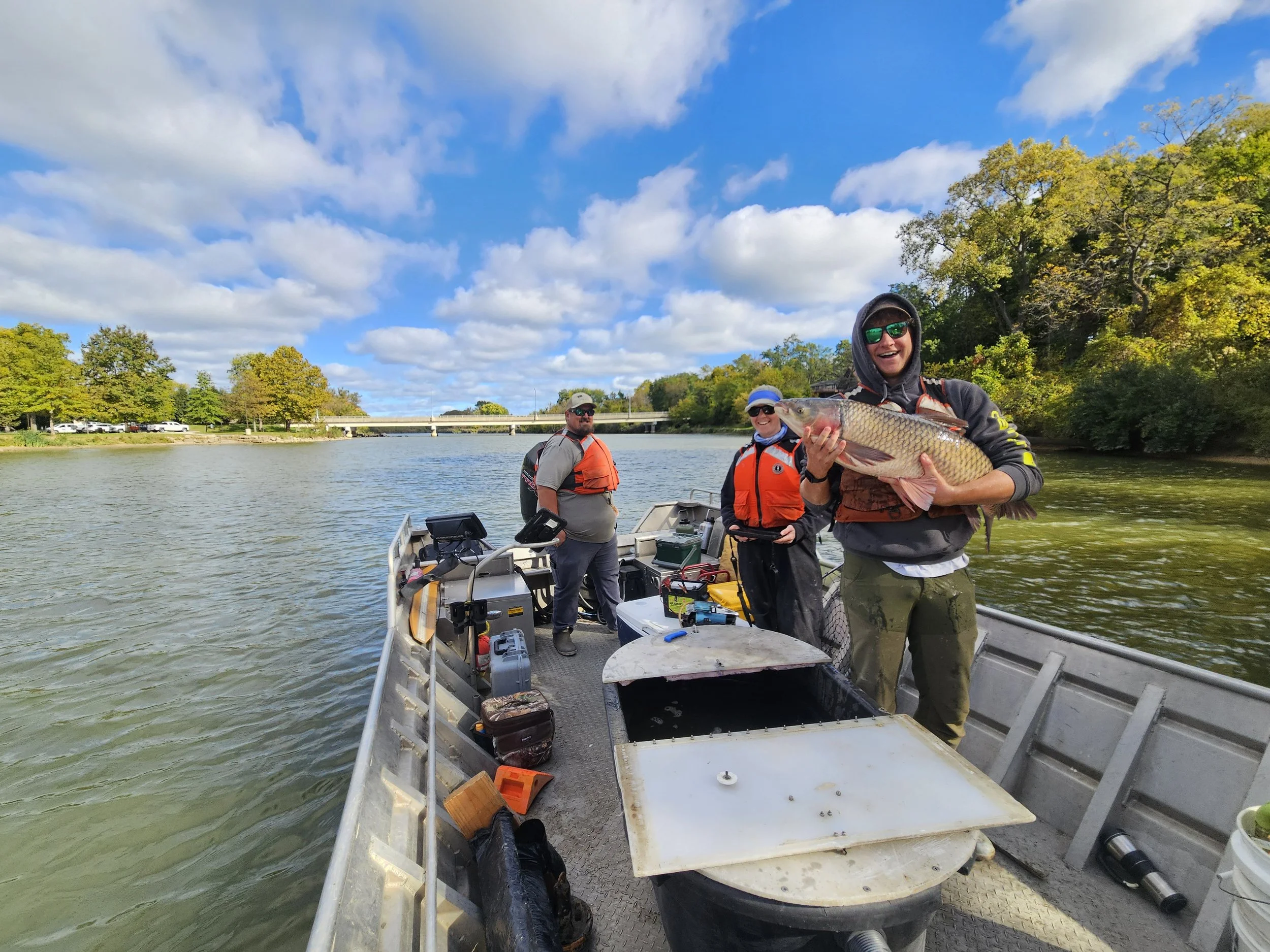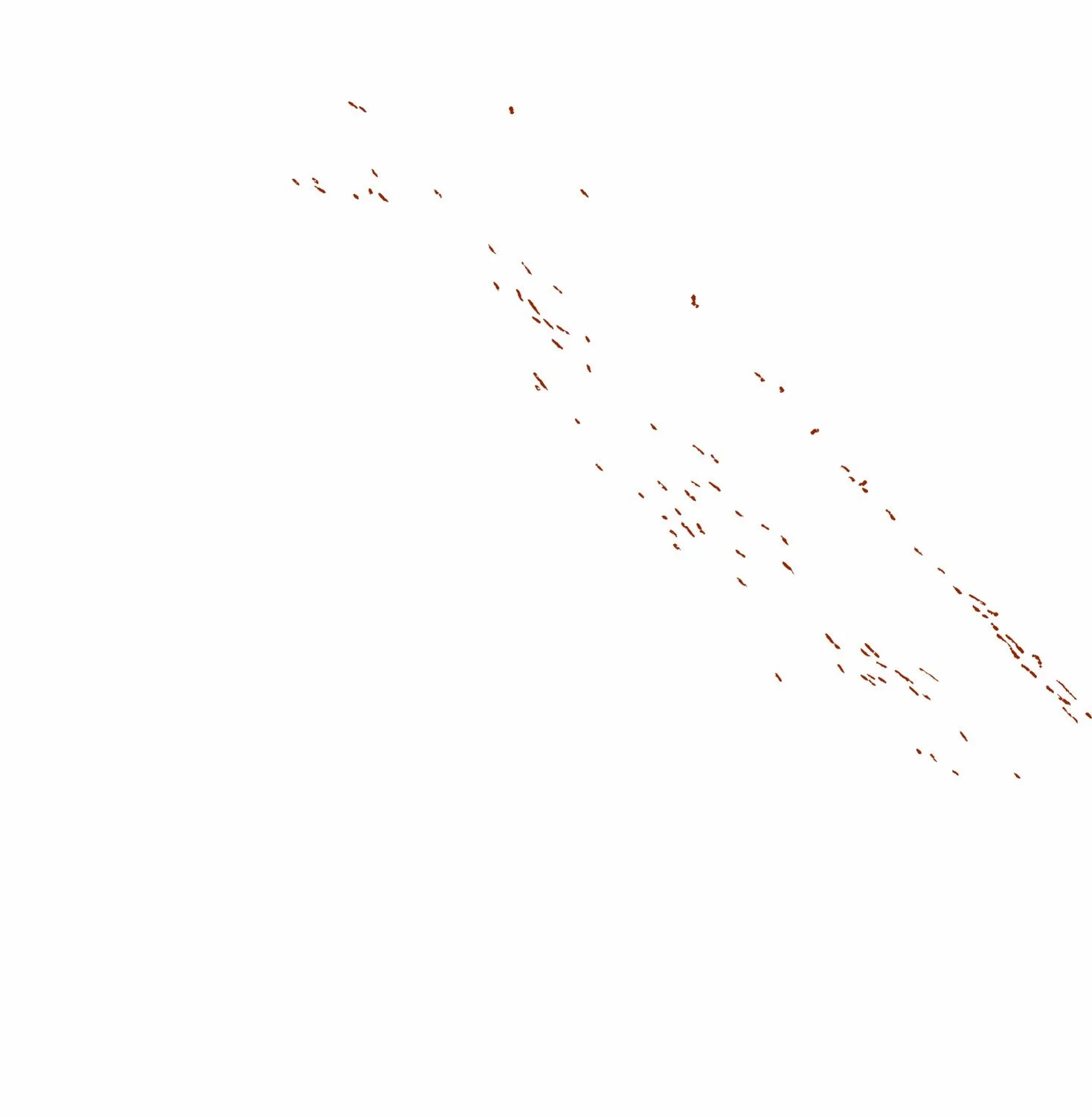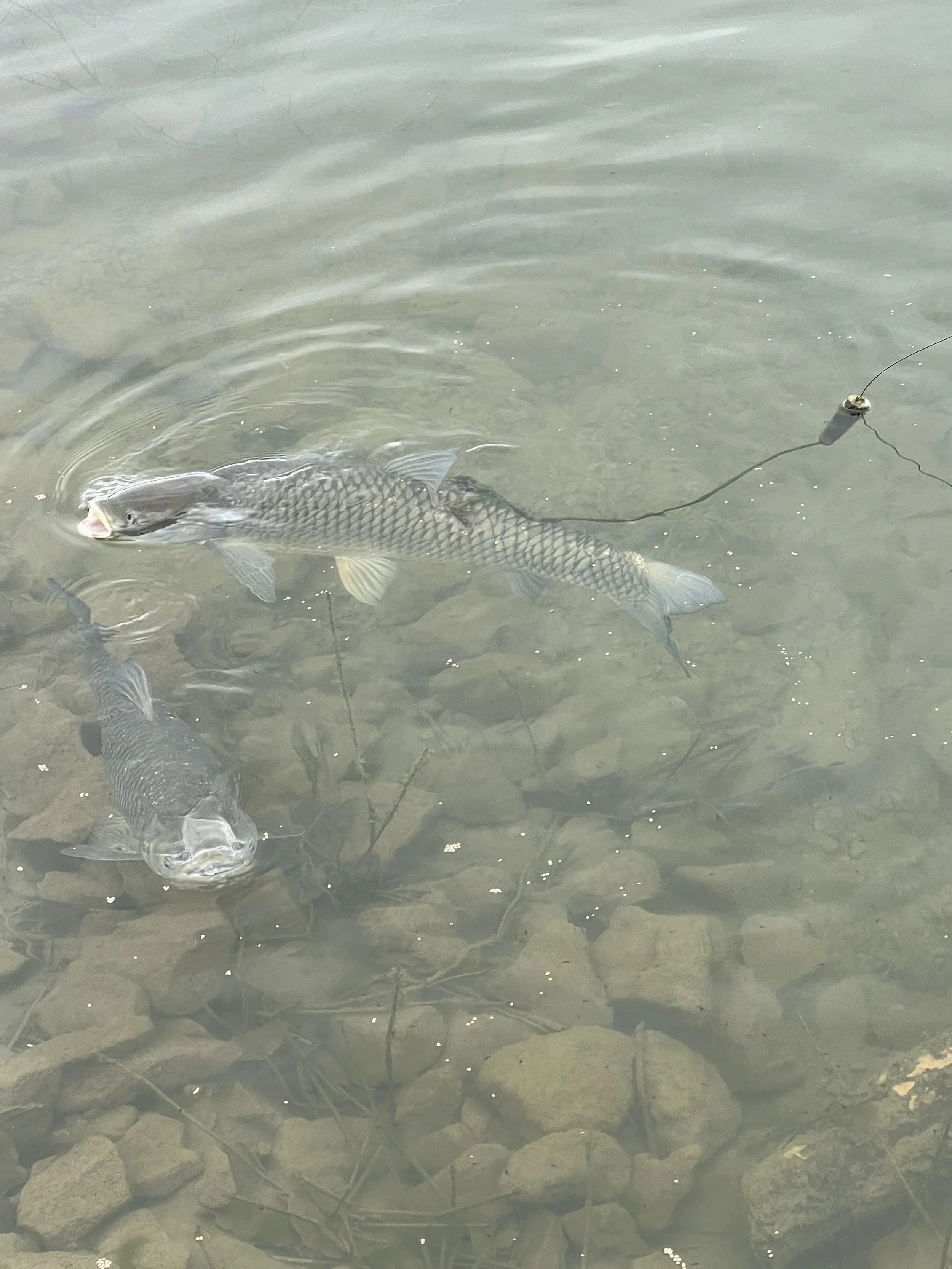Invasive Species Ecology and Management
Understanding and Managing Aquatic Invasions
The QCE Lab studies the ecology, detection, and management of invasive fishes across the Great Lakes and large river systems, with a primary focus on invasive carp. Our work integrates field experimentation, quantitative modeling, and collaborative science to improve how managers detect, remove, and forecast populations of invasive species.
By linking ecological mechanisms to management outcomes, we help regional partners evaluate control efficacy, understand behavioral drivers of invasion, and refine strategies coordinated through large management programs such as the Grass Carp Advisory Committee (GCAC) and other basin-wide management efforts.
Grass Carp (Ctenopharyngodon idella) captured in a gill net. Picture credits: Jesse McCarter with USFWS.
Field crews deploying gill nets optimized for adult Grass Carp (Ctenopharyngodon idella) capture.
Field crews with a Grass Carp (Ctenopharyngodon idella) captured with a gill net.
Optimizing Detection and Removal
Effective control begins with understanding how gear performance, effort, and timing influence success. The QCE Lab is leading a multi-year gear optimization study to quantify capture efficiency and develop reliable catchability coefficients that can be incorporated into population and removal models.
We have also developed person-hour optimization models that evaluate how crew effort and gear deployment relate to capture success. These models provide managers with practical tools to plan operations and allocate resources efficiently, ensuring that every hour spent in the field contributes meaningfully to population control.
Quantifying Population Trends
Long-term removal, telemetry, egg, and age data form the foundation of our efforts to quantify population change through time. Using hierarchical and integrated modeling frameworks, we estimate survival, recruitment, and abundance while explicitly accounting for uncertainty in detection and effort.
Current projects are developing sonar- and image-based workflows to estimate invasive fish abundance through automated detection and classification of targets in side-scan sonar imagery. These approaches provide scalable, non-invasive methods for tracking population trends and evaluating control efficacy across large systems.
Other modeling efforts are focused on building a unified index of relative abundance that integrates multiple datasets (removal, telemetry, and spawning data) collected through the Grass Carp management program. This index bridges disparate data sources to provide a consistent measure of population response across years and basins, improving how management progress is evaluated at regional scales.
Together, these modeling efforts support adaptive management by identifying where populations are responding to control and where additional effort may be needed.
A side-scan-sonar image with fish and woody debris on the left is passed through a classification model to get count data on the right.
Satellite-tagged Grass Carp (Ctenopharyngodon idella) feeding.
Behavior and Trophic Interactions
Behavioral and dietary flexibility shape how invasive species establish and persist. Through acoustic telemetry and behavioral-state modeling, we track how Grass Carp (Ctenopharyngodon idella) and other invaders respond to environmental cues, flow variation, and habitat structure. These analyses reveal the environmental conditions that promote movement into or out of removal zones, improving the timing and targeting of management actions.
Our diet research, in collaboration with geneticists, uses DNA metabarcoding to characterize food web interactions. Early findings indicate that Grass Carp consume less aquatic vegetation than expected and rely heavily on terrestrial and woody plant material—demonstrating broad trophic flexibility that complicates management. These results link movement, diet, and detection to management strategy, highlighting when and where removal efforts are likely to yield the greatest ecological return.
Collaborative Science and Applied Impact
All invasive species research in the QCE Lab is built on partnership and co-production of science. We work closely with state and federal agencies, universities, and conservation organizations to ensure that results directly inform management decisions.
This collaborative framework has helped shape basin-wide response strategies across the Great Lakes, particularly through the Grass Carp Advisory Committee (GCAC), where QCE Lab analyses have guided gear evaluation, removal prioritization, and progress assessment. By integrating empirical data, mechanistic models, and decision-support tools, our research helps ensure that invasive species management remains grounded in rigorous, quantitative science.
The Grass Carp Advisory Committee meeting in February 2024.








